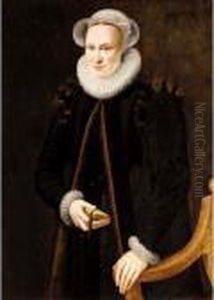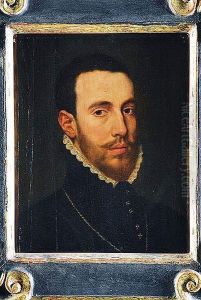Adriaen Thomasz. Key Paintings
Adriaen Thomasz. Key was a Flemish Renaissance painter, who specialized in portrait painting. He was born around 1544 in Antwerp, which was then part of the Habsburg Netherlands. Key is often considered to be a member of the Antwerp school and was known for his detailed and realistic portraits. His works are characterized by their precision and use of color, as well as the psychological depth he brought to his depictions of sitters.
Adriaen Thomasz. Key was likely related to Willem Key, a prominent Antwerp painter, and it is believed that he may have been his pupil or nephew. Adriaen became a master in the Antwerp Guild of Saint Luke in 1568, suggesting that he had completed his training and was recognized as a professional artist by that time. His career flourished in the second half of the 16th century, a period of religious turmoil in the Low Countries due to the Protestant Reformation and the ensuing conflicts.
Key's portraits often reflect the societal changes and tensions of his time. He painted both Protestant and Catholic subjects, indicating that his clientele was diverse and that he navigated the era's religious complexities with some diplomatic skill. Some of his most notable works include portraits of William the Silent, Prince of Orange, and his series of Calvinist and Anabaptist sitters, which provide a valuable insight into the clothing and appearance of the time.
The exact date of Adriaen Thomasz. Key's death is not known, but he is believed to have died after 1589. Much of Key's biography, including details about his training, family, and later life, remains a matter of speculation due to the scarcity of documentary evidence. Despite this, his surviving portraits continue to be admired for their craftsmanship and historical value. They can be found in various museums and collections across Europe, contributing to our understanding of the period's artistic and cultural landscape.
























